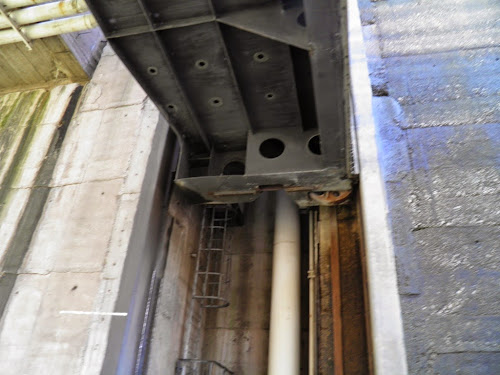Wasn't sure what to expect after yesterday's tour and the amount of bad feelings that our guide still had for Serbia. Oh, one thing I forgot to mention in my last blog is that our guide was asked about what happened to the mixed marriages after the war. Her response was that the divorce rate in Croatia soared to an all time high.
Back to Serbia. Our guide was a really delightful woman who had her masters degree in history. While I understand the feelings that our Croatian guide had I also understand that the Serbians have not had an easy history. Our guide today, Nevana, explained that while she lived at the same address and in the same house for a very long time, she loved in four different countries over that length of time.
The city of Belgrade has been fought over at least 115 times and razed to the ground 44 times. Each time they rebuild. The name Belgrade was first recorded in a letter on April 16, 878 from Pope John VIII to the Bulgarian Emperor Mihail Boris - it's literal translation is "White City."
The brown cannon ball in the wall below is a real cannonball that was shot at the fortress. The others were placed in later years as decorative elements.
Can't remember the name of the man in this statue but the real story that our guide talked about was the view from this specific angle. That is not his private parts but rather the handle of a sword leaning against him in the frontal view. Obviously the sculptor did not think about how his work of art might look from this angle.
We then visited Sveti Sava, the biggest Orthodox Church in the world. It is built on a site where the Turks were said to have burnt the relics of Saint Sava. Building began in 1935 but was halted due to World War II and the bombing of Belgrade, then followed by Tito's communist Yugoslavia. Construction was resumed in 1985 and has yet to be completed. It is said that the church was designed to cover all the ground where Saint Sava's ashes would have fallen when he was burned to death. The temple has three choir galleries with a capacity for 700 choir members each, as well as an observation gallery. The ground floor and galleries can house,10,000 people.
That afternoon we took another tour to Kovaćica, north of Belgrade. It is a quiet little town best known for its ethnic Slovak community and tradition of naïve painting. The term naïve painting refers to the fact that these painters have no formal training and they feature scenes from daily life. These paintings were fantastic. They were so colorful and brought a smile to your face. You have probably seen several of them since they are used on Unesco postcards.
From there we went to visit a violin maker in the town. He makes everything by hand. His father was a violin maker, his son and daughter make violins and even his granddaughter is making her first violin now. He was fascinating. He showed us how he checks the wood for sound for the front piece and what he looks for. The sides and backs are made of maple and the front board is only made from spruce. He pounded several unfinished spruce boards to let us heard the sound that piece of wood would make when it is fashioned into a violin.
He also restores violins from all over the world. If you placed an order with him for a violin, you would get the finished instrument over a year later.
He was explaining that you can see the history of a violin on the inside of the back board. Below is a restoration he is working on that is from 1773.
The violins below are all violins that he made for his granddaughter. He just kept making the. A little bigger as she grew.
He played the very first one he made for her to demonstrate that they are all working violins, not toys.
What a day! Thankfully tomorrow is a saling day as we go down the lower Danube and through the Iron Gate which is one of Europe's most dramatic natural wonders. It is a spectacular narrow gorge with white limestone cliffs. At this point,mthe river narrows to just 140 meters and reaches a depth of around 90 meters. Oh, and a few more castles.

|
| This guy is carved in the mountain. Romania's answer to Mount Rushmore. Or rather, Mount Rushmore took a page from Romania! |
We entered our last lock and were lowered another 90 meters.
This is the gate as we were going under it after the water levels equalized out.
Tomorrow we will be in Bulgaria. Even more to come later.































No comments:
Post a Comment